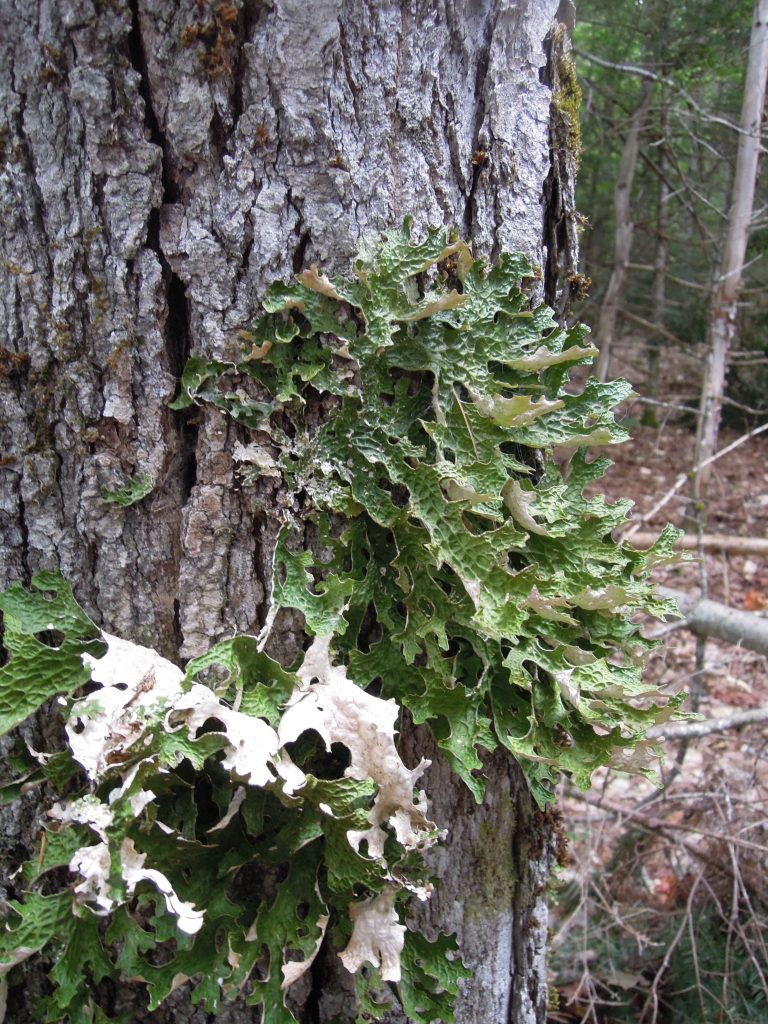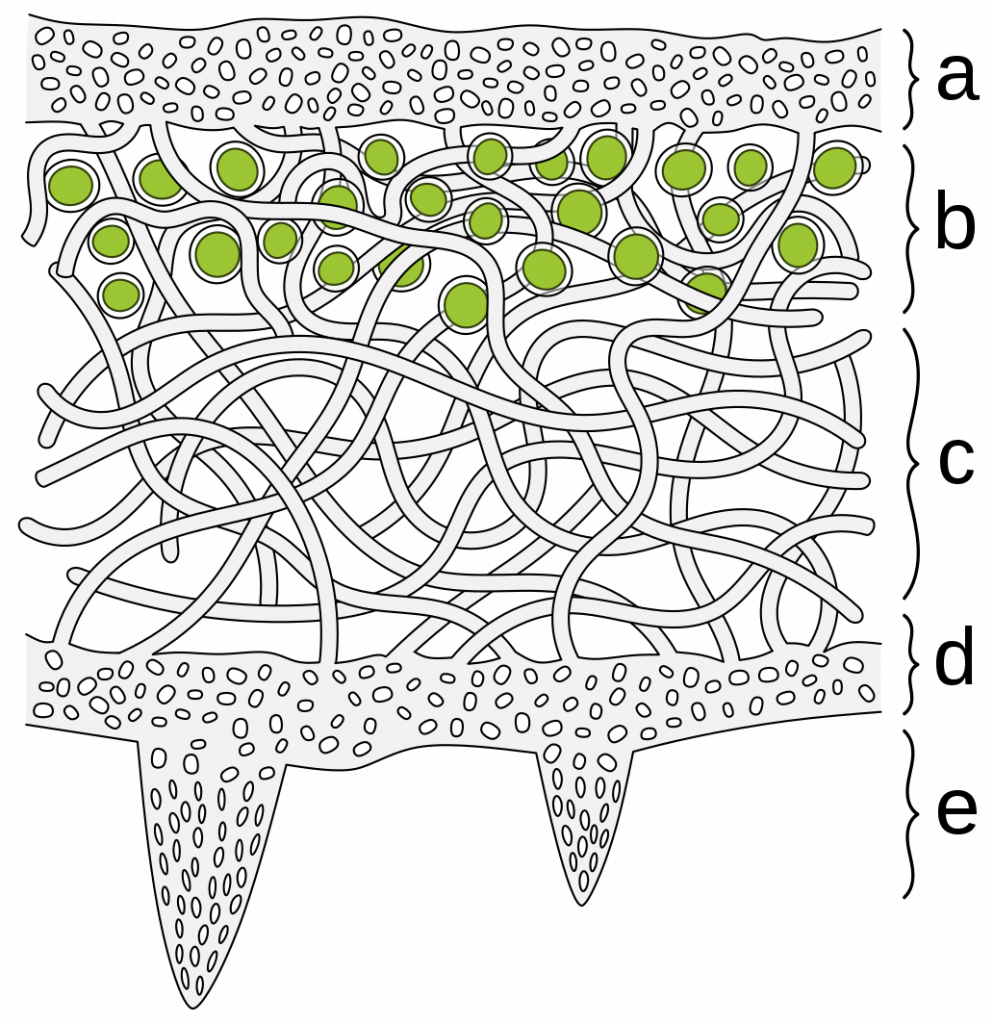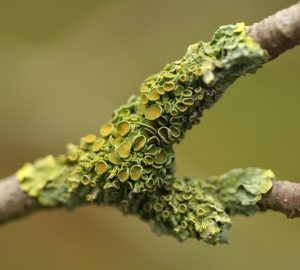Lungwort lichen (Lobaria pumonaria)

Lungwort lichen is unique among the groups considered here because it represents a very different biological entity that the others. Lichens are communities, assemblages of organisms and communities are generally not given genus and species names and are generally not considered to be organisms. But the definition of ‘organism’ is not rigid (see Chapter 1) and certainly lichens can be considered organisms. The fact that they can be given scientific names attests to this. Like ‘regular’ organisms, they are distinct in time and space. The boundary between the lichen and its environment is very evident and one could follow its development, if you live a long time and are patient, from its initiation to its demise. Traditionally, lichens were considered to have two components: a photobiont, either a unicellular green algae or a cyanobacterium (bluegreen algae) and a fungus. Recent work has ind icated that lichens also contain another fungus, one that is unicellular fungus i.e., a yeast. And some lichens, including lungwort have two photobionts, meaning that it is a community of at least four organisms.
Taxonomy and Phylogeny
Lichens are able to be classified because of characteristic form, color and structure. While each component of the lichen may have an evolutionary history (phylogeny), it would be difficult to track the phylogeny of the composite organism. Lichens are generally classified on the basis of their fungal component but the same fungus can produce marked different structures depending upon its algal symbiont and other features. Thus although lichens can be classified based on form (‘looks’, including chemical ‘looks’)) but this does not pin down the entity to specific components.
Structure
Lichens are typically grouped (see this the US Forest Service site for images) as ‘foliose ’— having flattened leaf-like features (like lungwort), ‘fruticose ’— having extensions that are typically round and stem-like, not leaf like, and ‘crustose’— forming a crust, typically over a rock. Especially in foliose and crustose lichens there is an upper and lower layer of dense fungal hyphae all glued tightly together, with a middle layer where the fungal hyphae are more loosely arranged and where the photobiont is found. The fungal component of most lichens is an ascomycete fungus and commonly one can find cup-shaped apothecia, a structure associated with the sexual reproduction of ascomycetes (aka cup-fungi) on the lichen. The algal component is unicellular and usually a cyanobacterium or a green algae. Lichens are often very colorful with the coloration generally being determined by the photobiont.

Sex and reproduction
Lichens reproduce asexually by fragmentation, and this is often promoted by the production of soredia, small pieces of lichen that are easily dislodged and dispersed. The fungal component of the lichen is capable of sexual reproduction, as evidenced by the production of ascocarps, but to recreate the lichen requires the acquisition of the photobiont.

Matter and energy
The lichen can be considered a photosynthetic autotroph, using sunlight to capture carbon dioxide and form carbohydrates that are then used (1) structurally to make more lichen (both the photobiont and the fungus) and used (2) energetically to power the metabolism of both the photobiont and the fungus. It is thought that the fungus manipulates the photobiont to make it more likely to ‘leak’ carbohydrates. The other 14 elements (besides carbon, hydrogen and oxygen) required to make more lichen come from rain water, perhaps modified as it descends down tree trunks and acquired by the fungal component.
Interactions
Lichens are extremely common components of the landscape, be it forest, desert or tundra. Although they are rarely eaten, they often provide materials for birds to build nests. They are significant to soil development both by providing organic material and also by breaking down rocks.
Further Reading and Viewing
- Forest service site on lichens.
- “Yeast emerges as hidden third partner in lichen symbiosis” by Natalie van Hoose. A discovery of a third component, yeast, in lichens.
Media Attributions
- Lichen cross section – heteromeric thallus © Nefronus is licensed under a CC BY-SA (Attribution ShareAlike) license
- Green lichen © Umberto Salvagnin from Italy

